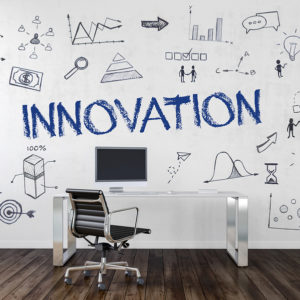A study envisioning how societies might address the complexities of the COVID-19 pandemic, undertaken by more than 70 leaders in innovation from around the world, is out.
It is the largest, nongovernmental study on the virus, and it paints a picture of a world recalibrated by it — with a heavy dependence on data in making people safer.
The study titled “Never Normal: A Call to Action to Address the New Realities Posed by COVID-19” is a clear-eyed look at the global future from the social pressure of prolonged separation — especially for young people — to stress in the food chain. The authorship is largely scientific and has been drawn from those who are charged with innovation in their work.
These authors, who plan to refine their suggestions and continue their work indefinitely, are banded together as the Cross-Industry Study Group. The group, whose members come from 12 countries (from the United States to Chile to Spain), owes its existence to one man: Omar Hatamleh, a scientist with NASA in Houston.
Hatamleh has been a chief innovation officer at the space agency. For the last four years, he has organized a conference on cross-industry innovation.
These conferences were dynamically different than most industry conferences: They did not discuss money or policy. Instead they concentrated on innovation in everything, from the future of buildings to how science is contributing to the creation of new video games, and how innovation is applied at the tech giants like Google and Facebook.
They celebrated, as does Hatamleh, exaptation — using an invention for one thing for an unrelated thing, like a medicine for cancer being used for Parkinson’s disease.
Hatamleh, the prime mover of the “Never Normal” study, and his deputy in the group, Dimitris Bountolos, a Chilean innovation consultant and former airline executive, drew on the creative talent from these conferences to gather the cross-industry group members and execute the study.
The group met remotely — and will continue to meet — in an intense three-week period during which they developed thousands of suggestions and explored as many ideas.
Gradually, they reduced these to two pertinent sections: one that delineates the challenges and the other that identifies the scientific way forward, with an emphasis on data and transparency.
“Never Normal” predicts a W-shaped future where there are waves of COVID-19, reflecting governments’ policies and social reaction. It also says the structures for resolution need to be created by governments and shared between them, so that freedom of movement can be restored, and governments do not poach technology and supplies from each other.
The study says the best hope for a proven vaccine is 12 to 24 months. It sees a great diminution in recreation — theaters and sports — as we know it. It predicts a digital future with intense social surveillance. It offers no panaceas, no silver bullets.
The study is emphatic about sanitation and looks at everything from new air-filtration technology for buildings to monitoring sewage to assess patterns of infection. The sewage does not need to have active virus particles to tell its tale, to show patterns, and to identify trends in infection.
The study sees a future where tracking is vital, using things like smart watches and sensors that are becoming ubiquitous with 5G telephone systems.
In one place, the study suggests that coughing can be identified by sensors and can direct authorities to potentially infected people who have not yet sought treatments. The study calls this “catching the cough.”
The study points to “air sterilization” as another innovative weapon in the COVID-19 fight.
The study states, “There are new nanotechnology-based on laser-induced graphene water filters that eliminate viruses and bacteria in water. This new concept engineered for air filtration could be used in air filters in heating, ventilation and air conditioning or integrated into face masks for a self-sterilizing effect.”
This technology, it says, has the potential to be combined with state-of-the-art air filtration such as HEPA filters.
Part of the significance of “Never Normal” is that it looks at the scientific contribution to stabilizing the world through a lens other than a purely medical one.
Its message: We need all the science we can get.

